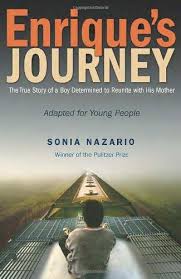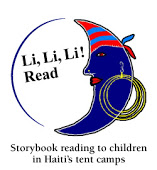by Samantha Smigel and Julia López-Robertson, The University of South Carolina
 We end our blog this month with a look at ¡Juventud! Growing up on the Border (Saldaña, 2013), a collection of short stories and memories from a variety of authors. Each author shares their growing up experiences with readers. Comprised of short stories and poems, so much can be said with so few words. The poetry and stories in this book are mesmerizing as each one reveals small moments to which all readers can relate. The words share memoirs, love, and family traditions from different perspectives and cultures. I [Samantha] felt as though I was in each of these families, making connections, relating to some of the events, all the while gaining perspective and compassion. Continue reading
We end our blog this month with a look at ¡Juventud! Growing up on the Border (Saldaña, 2013), a collection of short stories and memories from a variety of authors. Each author shares their growing up experiences with readers. Comprised of short stories and poems, so much can be said with so few words. The poetry and stories in this book are mesmerizing as each one reveals small moments to which all readers can relate. The words share memoirs, love, and family traditions from different perspectives and cultures. I [Samantha] felt as though I was in each of these families, making connections, relating to some of the events, all the while gaining perspective and compassion. Continue reading





 There is an abundance of young adult (YA) literature that lends itself to exploring issues of social justice. Introducing young adults to nonfiction books about societal and global dilemmas can be a very exciting way to engage youth in problem-based learning through literature. One issue that has local, national, and global implications deals with huge influx of unaccompanied and undocumented children from Central America.
There is an abundance of young adult (YA) literature that lends itself to exploring issues of social justice. Introducing young adults to nonfiction books about societal and global dilemmas can be a very exciting way to engage youth in problem-based learning through literature. One issue that has local, national, and global implications deals with huge influx of unaccompanied and undocumented children from Central America.  Books about Haiti had a slight resurgence in the area of children’s literature after the 2010 earthquake. However, few books have made it in print in the language Haitian children know best – Creole. It has been easy for publishers to overlook this market for many reasons. Among them is that those in Haiti who can afford to purchase books are fluent in French as well as Creole. But Haiti’s population is estimated at nearly 10 million, nearly all of whom speak Creole with approximately 10% who are actually fluent in French. This raises the question as to why books in Creole are not nearly as plentiful as books in French. In a country where adult literacy has been stagnant at 48.7%
Books about Haiti had a slight resurgence in the area of children’s literature after the 2010 earthquake. However, few books have made it in print in the language Haitian children know best – Creole. It has been easy for publishers to overlook this market for many reasons. Among them is that those in Haiti who can afford to purchase books are fluent in French as well as Creole. But Haiti’s population is estimated at nearly 10 million, nearly all of whom speak Creole with approximately 10% who are actually fluent in French. This raises the question as to why books in Creole are not nearly as plentiful as books in French. In a country where adult literacy has been stagnant at 48.7% 



